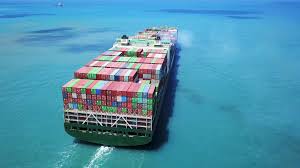Trade Credit Insurance: Protecting Manufacturers Against International Payment Default
In the complex world of international manufacturing and global trade, one of the most significant risks businesses face is the potential for payment defaults. Trade Credit Insurance emerges as a critical financial safeguard, offering manufacturers a robust protection mechanism against the unpredictable landscape of international commerce.

Understanding Trade Credit Insurance: The Basics
Trade Credit Insurance is a specialized financial product designed to protect businesses against the risk of non-payment by international customers. For manufacturers engaged in global trade, this insurance provides a critical safety net, ensuring financial stability and continuity even when faced with challenging economic circumstances.
What Exactly is Trade Credit Insurance?
At its core, Trade Credit Insurance is a risk management tool that compensates manufacturers when buyers fail to pay for goods or services. This can occur due to various reasons, including:
- Bankruptcy
- Prolonged payment delays
- Political instability in buyer's country
- Unexpected economic downturns
- Currency exchange complications
The Financial Mechanics of Trade Credit Insurance
Typically, Trade Credit Insurance covers a percentage of the invoice value—often between 75% to 95%—if a buyer defaults on payment. This percentage can vary based on the specific policy, risk assessment, and the markets in which a manufacturer operates.
Why Manufacturers Need Trade Credit Insurance
1. Mitigating International Trade Risks
International trade introduces complex risks that domestic transactions do not. Different legal systems, varying economic conditions, and geopolitical tensions can dramatically impact payment reliability. Trade Credit Insurance provides a comprehensive risk management strategy that goes beyond traditional banking guarantees.
2. Cash Flow Protection
Unpaid invoices can create significant cash flow disruptions. By insuring against payment defaults, manufacturers can maintain more predictable revenue streams and reduce the financial strain of potential non-payments.
3. Enhanced Credit Management
Most Trade Credit Insurance providers offer additional services, including:
- Buyer creditworthiness assessments
- Ongoing market intelligence
- Risk monitoring for specific countries and sectors
- Support in debt collection processes
Selecting the Right Trade Credit Insurance Policy
Key Considerations for Manufacturers
- Coverage Scope: Determine whether you need domestic, export, or comprehensive international coverage.
- Risk Tolerance: Assess the percentage of invoice value you want to be protected.
- Sector-Specific Risks: Different manufacturing sectors have unique risk profiles.
- Geographic Expansion: Consider your current and future international market strategies.
Policy Types
Manufacturers can choose from several policy structures:
- Whole Turnover Policies: Cover all buyers and sales
- Specific Buyer Policies: Protection for selected high-risk or high-value customers
- Single Buyer Policies: Insurance for transactions with one specific international client
Cost Considerations and Premium Calculation
Trade Credit Insurance premiums are calculated based on multiple factors:
- Annual sales volume
- Geographic markets
- Historical payment performance
- Buyer creditworthiness
- Desired coverage percentage
Real-World Implementation Strategies
Case Study: Automotive Parts Manufacturer
Consider a mid-sized automotive parts manufacturer exporting to emerging markets. By implementing Trade Credit Insurance, they reduced payment default risks from 15% to less than 2%, stabilizing their international expansion strategy.
Potential Limitations and Exclusions
While comprehensive, Trade Credit Insurance isn't a catch-all solution. Common exclusions might include:
- Disputes over product quality
- Pre-existing payment issues
- Intentional defaults
- Some high-risk political environments
Integrating Trade Credit Insurance into Risk Management
Successful implementation requires a holistic approach:
- Conduct thorough buyer due diligence
- Maintain robust documentation
- Regularly review and update coverage
- Work closely with insurance providers
Conclusion: A Strategic Financial Shield
Trade Credit Insurance represents more than just an insurance product—it's a strategic financial tool enabling manufacturers to confidently explore and expand into international markets. By understanding its nuances and implementing it effectively, businesses can transform potential risks into opportunities for growth.
Frequently Asked Questions
- How quickly can Trade Credit Insurance be implemented?
- Typically, policies can be activated within 2-4 weeks after a comprehensive risk assessment.
- Can small manufacturers benefit from this insurance?
- Yes, many providers offer scalable solutions suitable for businesses of various sizes.
- Does Trade Credit Insurance replace credit checks?
- No, it complements thorough credit checks and due diligence processes.


 0330 127 2333
0330 127 2333
